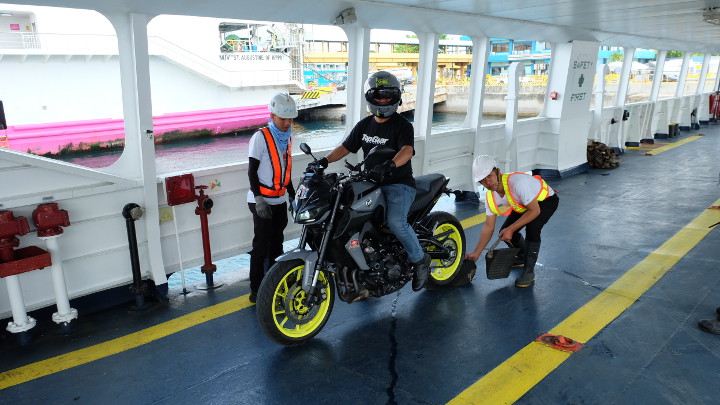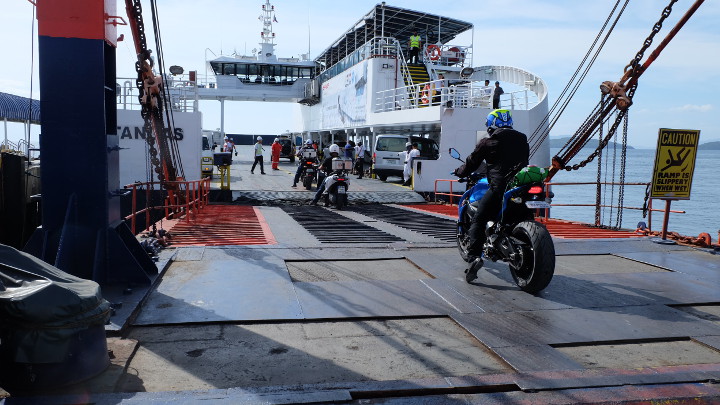In March, Moto Sapiens came up with an article entitled ‘10 Things riders must know when traveling via RORO.’ Since inter-island travel is fast becoming popular in our archipelagic country, we’ve now decided to do a follow-up story on RORO (roll-on, roll-off) procedures because we missed some important items that might be useful for motorcycle riders.
This we realized after interviewing Mary Ann Pastrana, executive vice president and treasurer of the Archipelago Philippine Ferries Corporation (APFC), during the inauguration of its 13th FastCat RORO ferry at the Batangas International Port on October 28, 2019. AFC operates FastCat RORO ferry boats that sport the modern double-hull design.

“Nowadays, the motorcycles are twice the number of other vehicles that avail of the RORO service,” Pastrana said.
Transporting a motorcycle via RORO is half as expensive as taking the ferry with a light vehicle—the cost is P1,250 for bikes versus P2,500 for cars. Consider, too, that motorcyles are a great option and a big relief for travelers who often end up miserably stranded because of the acute shortage of public transportation during holidays (an issue that is becoming a perennial problem, sad to say).
Anticipating an exodus of vacationers taking the inter-island ferries in observance of Undas, FastCat general manager Captain Segundo Mentoya has shared with us some additional tips for motorcycle riders taking the RORO during holidays. Here’s your guide to a hassle-free RORO experience:
1) Book online.
To avoid the long queue at the port of Batangas, motorcycle riders taking the FastCat are advised to book online. This is also a big help to riders traveling together, to ensure everyone in the group will be granted passage.
2) Take advantage of quicker payment options.
FastCat has ambulant cashiers who collect payment in the waiting area for vehicles. Just approach them to pay your fare.
3) Note that motorcycles often get priority treatment.
This is because they are smaller than cars and are thus easier to load on the RORO—they can be maneuvered into available spaces more quickly and easily. Always listen to the announcements from the ferry officers to help speed up the boarding process.
4) Coordinate with the marshals.
Once your motorbike is on board the ferry, don’t just leave right away. Check how the marshals secure your bike on the lashing belt points using the harnesses. Although the RORO personnel have undergone training in loading vehicles, there’s still a chance that they’re not too familiar with the structural designs of some bikes. “Hindi naman sila ang may-ari ng unit; posibleng hindi nila kabisado ang mga strong points ng bike chassis,” explained Mentoya.
5) Remember that there are bike covers available.
If there’s a possibility that your bike will get wet due to strong waves, you can request for a bike cover to keep it dry.
Of course, don’t forget to bring photocopies of your motorcycle’s registration papers—you need to show these to the port authorities before you are given the go-signal to board the RORO with your bike.
Considering all these, would you rather still take your chance with public transportation, or would you switch to traveling on the RORO with your motorcycle?



